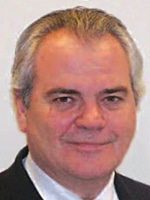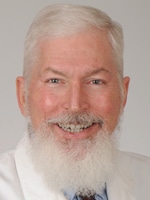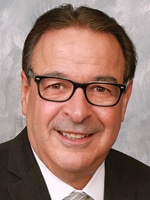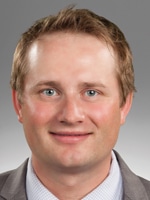June 2021—A brief update on SARS-CoV-2 variant testing and then a look at the latest on the laboratory labor struggle. That’s what Compass Group members provided when they spoke May 4 in another of their monthly calls led by CAP TODAY publisher Bob McGonnagle.
“We’ve accepted that if we’re going to solve the [labor] issue,” said Sam Terese of Alverno Laboratories, “we’ll have to create the workforce. They’re not coming to us in any other way.”
With McGonnagle and Terese were Bob Stallone and James Crawford, MD, PhD, Northwell; Sterling Bennett, MD, MS, Intermountain; John Waugh, MS, MT(ASCP), Henry Ford; Peter Dysert, MD, Baylor Scott & White; Steven Carroll, MD, PhD, Medical University of South Carolina; Stan Schofield, MaineHealth; Gregory Sossaman, MD, Ochsner; Clark Day, Indiana University; Diana Kremitske, MS, MHA, MT(ASCP), Geisinger; Julie Hess, AdventHealth; Terrence Dolan, MD, Regional Medical Laboratory; and Dan Ingemansen, Sanford.
The Compass Group is an organization of not-for-profit IDN system lab leaders who collaborate to identify and share best practices and strategies. Here is what they said.
Bob Stallone, what do the COVID and the laboratory situations look like to you now as we convene in early May?
Bob Stallone, senior advisor, Northwell Health laboratories, New York: It depends on your perspective. In Florida, where I am now, people are sitting at the tiki bars shoulder to shoulder with others with no acknowledgment that COVID is serious. People seem satisfied to see thousands of new cases daily. In New York, even though things are much better there, with the positivity rate in the two percent range, people were still careful.

Stallone
From the laboratory standpoint, it’s interesting. I’ve been working with Northwell in a consulting senior advisory role, and the projection is that operating costs for our lab group will increase from $450 million to $600 million a year at the central laboratory. And margins probably went 60 percent above what was planned in the projections—despite all the additional expense that COVID brought to the table.
To me, it’s always “don’t let a good crisis go to waste.” From a business perspective, from a positioning of the laboratory in its role in the community and in the health system, it’s been a fantastic opportunity. Too bad there has to be a pandemic to make that happen, but I hope everyone has been able to achieve that positioning within their own health systems and communities to demonstrate what laboratories can do.
We shouldn’t look at this as something that’s ending despite the numbers declining. I’m looking at it as our now having a higher point to jump off from. We should be looking at high-volume testing at lower cost and more accessibility to people, and we should be prepared for other types of public high-volume testing in the future, including the variants, even moving toward more accessibility for testing for STDs and for other viral panels.
We’ve seen many new lab players spring into action to do COVID testing. In a recent CAP TODAY roundtable with the people who do most of the anatomic pathology billing in the country, there was talk about how their clients immediately put in PCR machines and began billing more PCR COVID testing than they were doing surgical pathology, which is quite an achievement (CAP TODAY, April 2021). I take that as a mixed message—I have a feeling we’ll be able to buy a lot of used PCR equipment within the next year or so once the reimbursement for COVID tests comes down. Sterling Bennett, what do you think about that?
Sterling Bennett, MD, MS, medical director, Intermountain Healthcare central laboratory, Salt Lake City: I think we’re not the only ones who believe you should never let a good crisis go to waste. People saw a lot of opportunity to get into the testing game. The thing we found most disconcerting is that many of the people who jumped in didn’t have an appreciation for how much expertise is required to perform testing in a reliable and accurate way. I guess we’ve made it look so easy over the years that everybody and their dog thinks they can get into the act to do it as well as we’ve done it.
When we spoke last month Michigan had become a hotspot. I know that the Indian variant was found in Michigan north of Lansing. John Waugh, give us the current state on the ground.
John Waugh, MS, MT(ASCP), system VP, pathology and laboratory medicine, Henry Ford Health System, Detroit: Our rates are coming down just this week. The U.K. variant still accounts for about 60 percent of the isolates recovered. We are now beginning to do the sequencing at Henry Ford, and we’re also sending samples to the state of Michigan.
Does anyone else have experience with setting up next-generation sequencing to test for variants?
Dr. Bennett (Intermountain): We have not set up NGS, but we have gotten some of the Thermo Fisher primers for individual mutations and we’re just getting our feet wet with that.
Peter Dysert, you have NGS within the Baylor Scott & White system. Have you applied that technology and capacity to COVID variants?
Peter Dysert, MD, chief, Department of Pathology, Baylor Scott & White Health, Dallas: We are still in the process of validating our machines. We’ve been relying on the state and the state is slow to give us the answers back, although it’s down to under a month now. That’s an improvement.
Sam Terese, what have you decided at Alverno in terms of in-house NGS capacity to run down some of the variants?
Sam Terese, president and CEO, Alverno Laboratories, Illinois and Indiana: Our view of it is to not go down that path at this time. It would displace some of our activities in the oncology space, and we’re still debating what it means clinically and how it impacts care. We’re not an epidemiology laboratory. There are challenges with the state labs in their reporting and getting information back to clinicians, but Rush University Medical Center, a large academic medical center in Chicago, set up a program as well. So it’s not an area we look to evolve and move into.
You have a big effort in next-gen sequencing outside of COVID, correct?
Sam Terese (Alverno): Yes, we launched our program and we’re hoping in the next 30 days to launch a 500-gene panel as well. Reimbursement is still a challenge. We partnered with a group to do our preauthorization work. For reporting, the summary report is pretty easy to move through the IT systems, but you have a 50-page report that you have to get out somehow. For that, we had to partner with a few other entities.

Dr. Carroll
Steve Carroll, what are you doing with COVID variants in South Carolina?
Steven Carroll, MD, PhD, chair, Department of Pathology and Laboratory Medicine, Medical University of South Carolina: We have been sequencing COVID-19 genomes for several weeks. We have the same issues on reimbursement, but our problem is the state has limited capacity to do it. Since we’re a state medical school, we’re doing it as a matter of public health. We’ve been seeing some interesting shifts. Julie Hirschhorn in my department has pulled a lot of data together and we’ve watched it evolve from where we were mainly seeing the South African variant and where we had a hodgepodge of variant to the U.K. variant having now taken over the state.
In this work are you finding any particular morbidity or even mortality connected to individual variants in your patient population?
Dr. Carroll (MUSC): Not so far. We’ve also been looking at whether the people who had been vaccinated and then turned up COVID positive were infected with variants, and we haven’t found evidence of that either. Of the first 12 such cases we looked at, only one had a variant.
Stan Schofield, what is your experience with the clinical implications of variants? What demands are you getting from clinicians and/or patients?
Stan Schofield, president, NorDx, and senior VP, MaineHealth: U.K. B.1.1.7 is the dominant strain in Maine. We are not doing NGS in-house and have no intention of doing it in-house. All those go to the state laboratory under contract. The infectious disease doctors have medical curiosity, but we don’t have a variant that has greater mortality or morbidity at the moment.
We don’t have NGS capacity equipment or personnel to try to do this, and there’s no payment for it. So we’re staying with our oncology program, and those patients are getting our NGS resources and service.
The Indian variant has been identified in the United States. Is this one a particular worry?
Stan Schofield (MaineHealth): It’s a concern. It will be here; it’s just a question of how soon. The U.K. B.1.1.7 variant started in September last year and we started picking it up in late March. Trips to the northeast from the U.K. are much more frequent than from India. It is a big concern, but I don’t have enough information to advise or warn with any certainty.
Greg Sossaman, what is the situation in New Orleans?
Gregory Sossaman, MD, system chairman and service line leader, pathology and laboratory medicine, Ochsner Health, New Orleans: Although Ochsner has done a fabulous job of making the vaccinations available, we’re one of the states that’s lagging behind nationally. There’s a lot of vaccine hesitancy in our population. My fear is that as we have more complacency and fewer mask mandates, we’re going to see rising cases again if we can’t get our vaccination rate up. So we’re preparing for more testing to come; I hope it doesn’t occur but better to be prepared.
There seems to be a question about whether, with this vaccine hesitancy, we can reach herd immunity.
Clark Day, I assume you’ve recovered from the basketball testing you were doing a couple of months ago. What’s the vaccination situation in Indianapolis?
Clark Day, VP of system laboratory services, Indiana University Health: Yes, we made it through the NCAA tournament and performed 28,300 tests in three weeks. Only 15 positives, which was great. We did variant testing on those specimens, and eight of the 14 we were able to test were U.K. and four of the specimens were of the variant that’s circling in the New York area.
About a third of the population of Indiana is vaccinated.
Diana Kremitske, what’s going on at Geisinger?
Diana Kremitske, MS, MHA, MT(ASCP), VP, Diagnostic Medicine Institute, Geisinger, Danville, Pa.: About 70 percent of our employees are fully vaccinated at this point. We’re still encouraging those who are on the fence. Our organization has been doing a lot in educating about the vaccine, not only for employees but also for the community.
We’re just starting to validate our variant testing and have run 20 random samples. We’re seeing the U.K. and New York variants.
You’ve all in the past few months expressed anxiety and concern about labor issues in the laboratory. Sam Terese, tell us about your laboratory workforce and labor situation at Alverno.
Sam Terese (Alverno): I spent most of the morning today in a dialogue about that. We are seeing significant shortages in several of our markets and it’s at the point where we think a couple of things have happened. There’s been an exodus of sorts: people leaving the field, a little burned out, a little fearful, and we’ve had some of that. The Alverno Laboratories system has a fairly young workforce relative to that of others, so retirement is not a big issue. In the nontechnical labor pool, we see a lot of people scheduling interviews and not showing up, or they get hired and don’t show up. Some of that may be related to government incentive programs and extreme competition for those individuals.
In spring of next year, we hope to open our third school of medical technology in the Chicago market to drive the labor pool. We already have two in Indiana plus a histotechnology program, and the school in Chicago will be our first in Illinois. Over the long term we’re going to have to drive the pool.

Terese
You’ll teach and grow your own and retain them and set them on a career path?
Sam Terese (Alverno): Yes, and we do that with histotechnologists. We are finding our processing staff and turn them into histotechs. They do a great job. We graduate 12 to 14 a year. And I failed to mention we have an MLT program we also sponsor out of northwest Indiana to help drive the technical labor pool. We also have pretty structured programs for taking biology-degreed–level people and training them to be techs as well. We’ve accepted that if we’re going to solve the issue, we’ll have to create the workforce. They’re not coming to us in any other way.
We have a lot of automation throughout the system, and we’re launching additional projects. All the operational things we can do from an efficiency perspective are still in play, but they’re not going to get us all the way home.
Diana Kremitske (Geisinger): We’re seeing the same, especially with our phlebotomy workforce, and I think the solution is not only going to become grow our own but also increase the rate of pay. And it’s going to impact the rates of pay for all the other laboratory roles because you start to run into compression issues throughout the workforce.
Our organization is seeing this not only in phlebotomy but also with other workers such as environmental services workers. There’s been a lot of communication about referral bonuses for these positions throughout our organization, as well as sign-on bonuses. What will be the rate of pay moving forward for laboratory professionals in all positions is going to be a key conversation.
Julie Hess, you’ve talked about labor difficulties at AdventHealth. Would you like to comment?
Julie Hess, executive director, laboratory services, AdventHealth, Orlando, Fla.: As soon as we think we have a wage solution for our entry-level staff, we are outbid by someone else. In central Florida we have found that Amazon distribution centers are paying well and people who don’t want to stay in health care are taking that entry-level position or other retail options. As soon as we increase our minimum wage, someone else out there is looking more attractive, maybe with benefits or with sign-on pay—different things. It’s a challenge to know if we can keep increasing the minimum wage and adjust the compression or if this is something we should give time to settle out. Maybe with the temporary sign-on bonus we can help alleviate the problem short term.
As Sam said, we too feel we have to grow our own resource, especially licensed employees. So I’ve started talking to a third university to try to develop another local program. The gap is not closing fast enough to prevent burnout. We have a lot of dedicated laboratory employees who have been with AdventHealth for years, and I feel bad asking them not to retire at 70-plus years old. They will retire someday soon, but we need new people to join us in this field. It’s a real challenge now in our area.
Terry Dolan, can you comment on the labor issue as you see it at RML, or on the COVID situation in Tulsa and across the state?
Terrence Dolan, MD, president, Regional Medical Laboratory, Tulsa, Okla.: We are seeing the positive rates for COVID-19 PCR level off. We’re doing quite a few antibody studies and we’ve had three patients who ended up in the hospital who were fully vaccinated and came down with COVID-19. We checked their antibodies; they were extremely low. Many doctors have reached out to me and we’re starting to test many of those who have underlying disorders. I think there’s real merit to that as time goes on. The spike protein, which gives us neutralizing antibody at least in correlation, seems to indicate that.
Oklahoma’s immunizations are going well; about a third are fully vaccinated. We are offering vaccinations to anyone who walks in the door as well as out of staters.
The workforce situation is similar to that of others. A hospital in Tulsa closed recently and that has given us a temporary increase in personnel. We’re seeing a lot of closures of community hospitals in the rural areas in this state and in Kansas, Arkansas, Texas, and elsewhere. Those workers start commuting into the city. That’s helped us as well.
We had a real shortage of phlebotomists in our hospitals. Techs are always an issue. We are open to any way we can participate with our colleges and universities in our surrounding area. We provide training to people who need an internship type of program. We have phlebotomist and med tech programs. We’re doing everything we can and the closures are helping. Our histology work picked up bigtime and we ran into real shortages there, but for whatever reason we’re starting to get a lot of takers in the past week and starting to fill positions.

Ingemansen
It’s a good sign. Dan Ingemansen, what is your labor situation in Sioux Falls?
Dan Ingemansen, senior director, Sanford Health, Sioux Falls, SD: At Sanford, we have 40 open laboratory positions, most requiring technical degrees. Sanford has two MLS programs, one in Sioux Falls and one in Fargo, which produce 20 MLS candidates per year. Knowing hiring will remain an ongoing challenge, I’ve challenged my team to review every job duty and we asked: Does that job function require a technical degree? If not, we will look to train a nontechnical associate. Another opportunity we continue to review is the on-site laboratory menu at our hospital and clinics. Like other Compass members, we’re not getting applicants and must think differently to continue providing high-quality services.
Yes, I do think new thinking will be needed over the long term to solve some of this problem. Jim Crawford, would you care to comment on anything you’ve heard?
James Crawford, MD, PhD, professor and chair, Department of Pathology and Laboratory Medicine, and senior VP of laboratory services, Northwell Health, New York: On the workforce topic, you may be aware that New York State has a strict vertical approach when it comes to technician and technologist training and certification: requiring state review and approval, or not, of course-hour work and the taking of a New York State certification examination regardless of out-of-state experience and certification. Thanks in part to the COVID crisis and the light shone on our laboratory workforce over the past year, the New York State Clinical Laboratory Association is working closely with Albany to try to rectify something that should have been fixed long ago: accepting National Accrediting Agency for Clinical Laboratory Sciences-approved degreed training and ASCP certification from out of state.
Since the beginning of the COVID pandemic, laboratory leadership of the academic medical institutions of New York State have been working together as a consortium [Crawford JM, et al. Acad Pathol. Jan. 2021]. We just completed a survey on what consortium institutions are facing as regard to current workforce shortages and what their ideal workforce size should be. For the 12 institutions that reported in, the findings are strikingly consistent: We are running at about 88 to 90 percent staffing in our clinical laboratories. When you think about a three-shift staffing requirement, seven days a week, and the subspecialized workstations that need to be staffed, it’s not hard to feel that the gaps loom large on a 24-hour cycle. And this is before we factor in the workplace stress incurred by personnel needing to work overtime and the not uncommon need for individuals in our workforce to work two jobs at different institutions.
This information was sought by the New York State Clinical Laboratory Association to help fuel not just the advocacy process but also impress upon state regulators the urgency of the need to change the regulations. I am grateful to the institutions that reported in—Northwell included—since we are competing in the same job market for the same potential employees. I don’t know if these New York State data are reflective of other states in the country, but what is striking to me is the consistency across area institutions. That’s basically hot off the press.